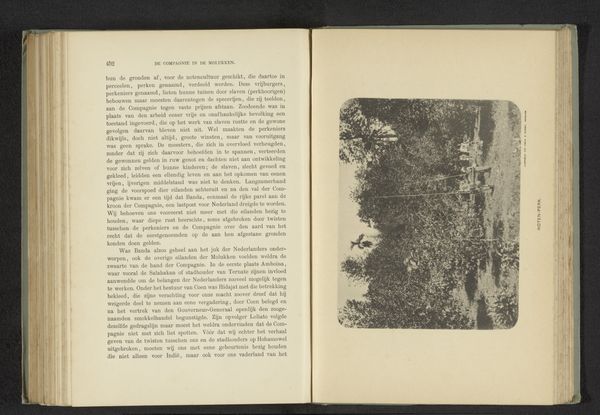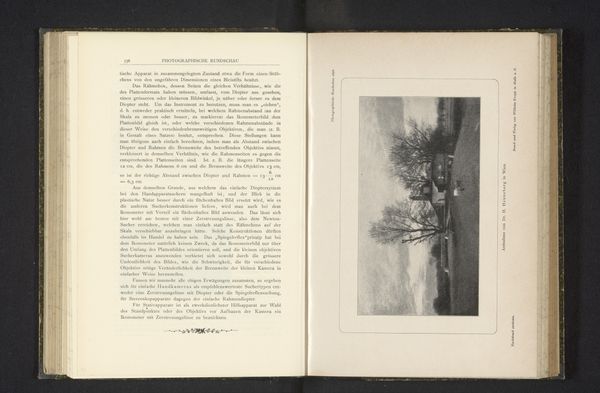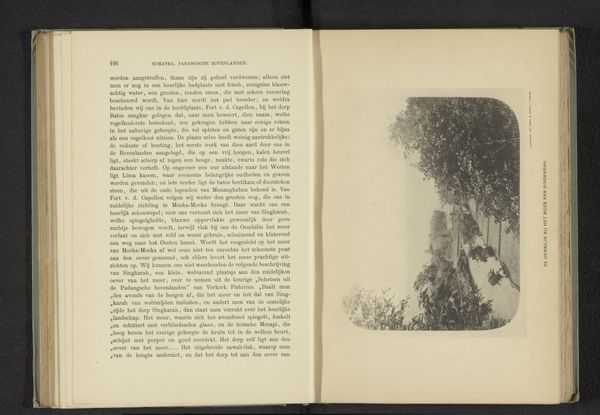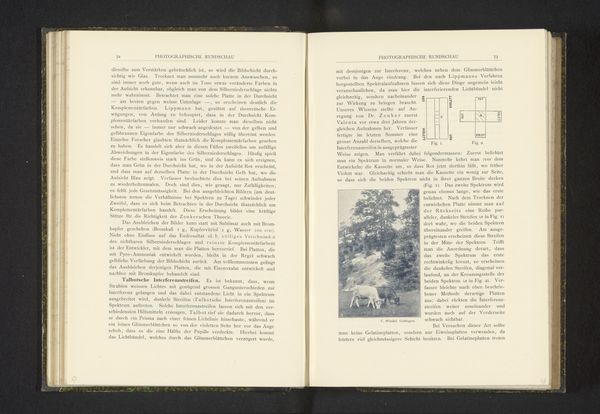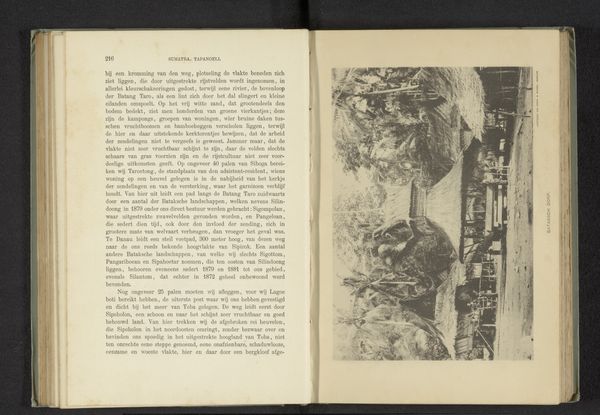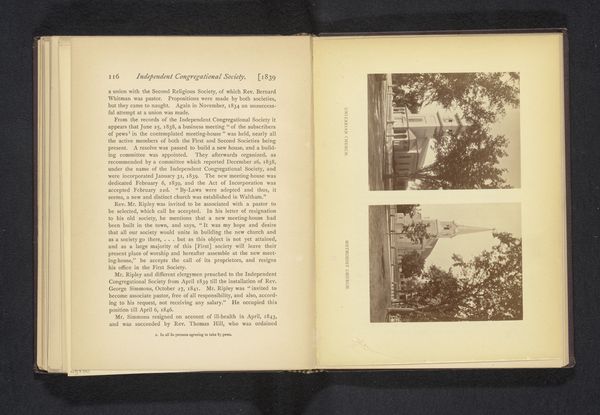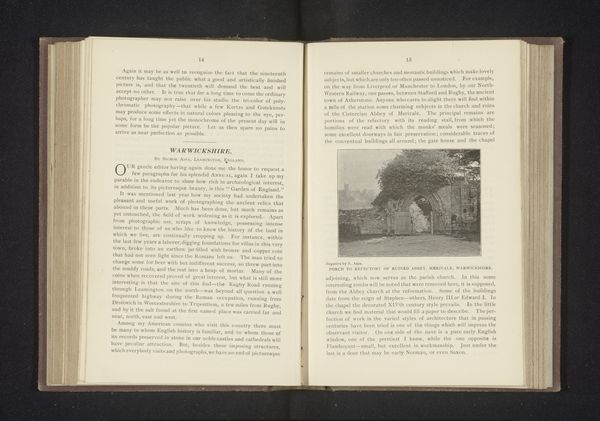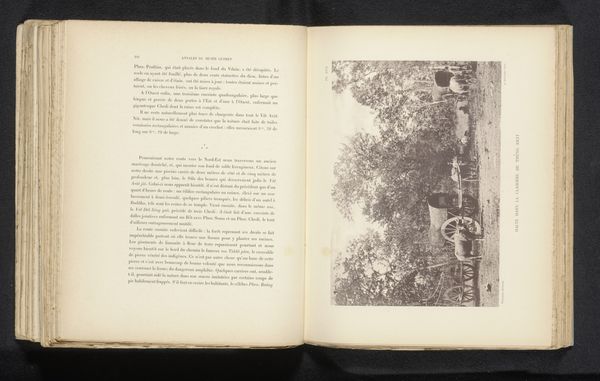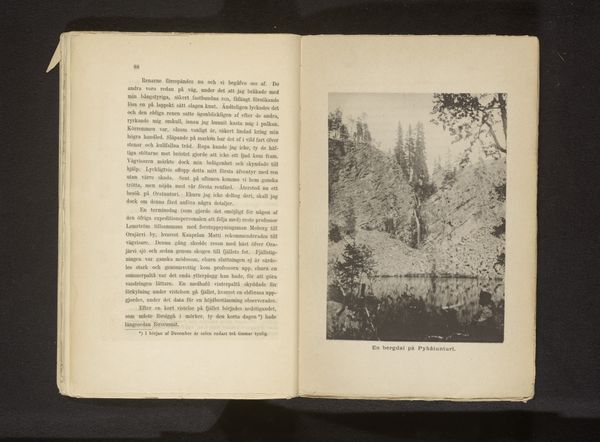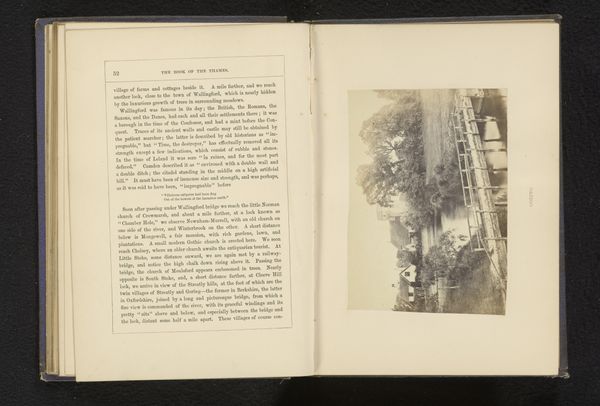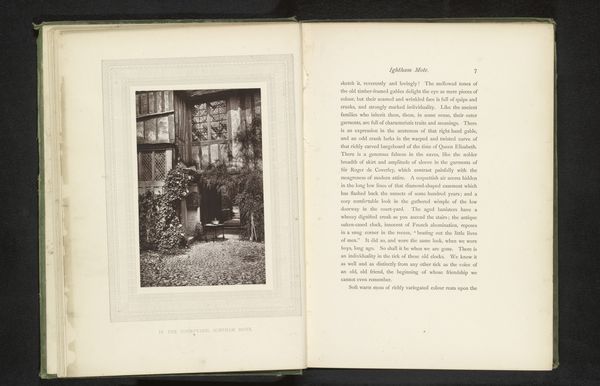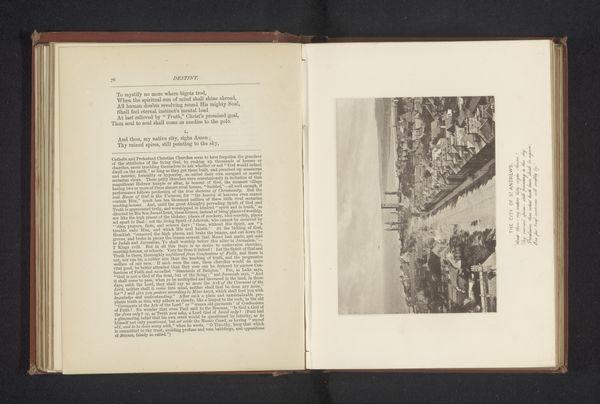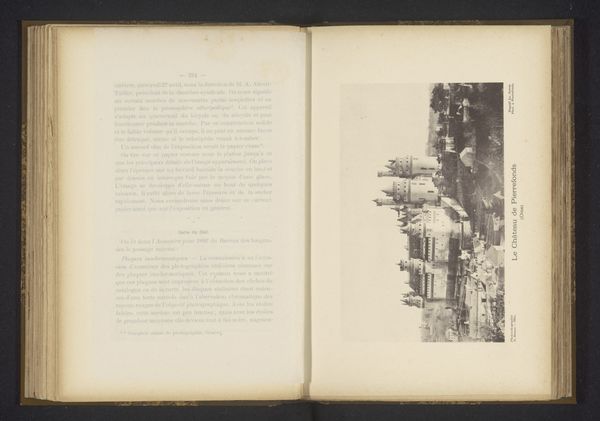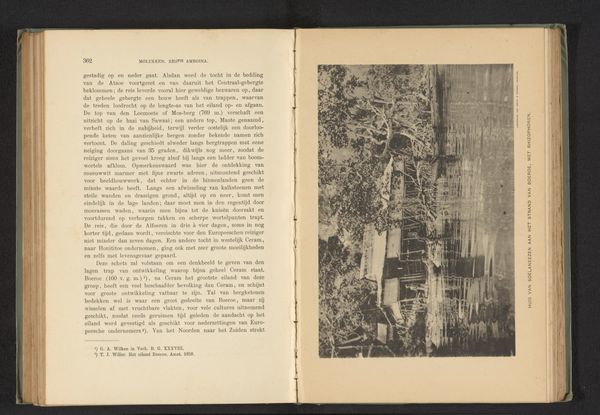
Man naast een cacaoboom en een koffieboom in Nederlands Oost-Indië before 1894
0:00
0:00
print, textile, photography, collotype
#
dutch-golden-age
# print
#
landscape
#
textile
#
photography
#
collotype
#
paper medium
Dimensions: height 163 mm, width 243 mm
Copyright: Rijks Museum: Open Domain
Editor: Here we have an image titled "Man naast een cacaoboom en een koffieboom in Nederlands Oost-Indië", which translates to "Man next to a cacao tree and a coffee tree in the Dutch East Indies", dated before 1894. It’s a collotype print, which gives it a fascinating textural quality. It looks almost like it’s printed on fabric. What do you see in this piece? Curator: What I immediately notice is the intersection of nature and industry. This wasn’t a quick sketch; it’s a collotype, a printing process which suggests deliberate, and likely mass, production. I’m drawn to the contrast between the seemingly “natural” subject matter – the cocoa and coffee trees, vital commodities – and the manufactured nature of the print itself. Do you see the labor involved, the hands shaping the landscape, and those creating the photograph and then this printed iteration? Editor: That's a great point. It wasn’t just about recording nature. The printmaking itself was work. It kind of flattens everything out in an interesting way. But who do you think the intended audience for this print was? Curator: I think it's crucial to consider who consumes this image and for what purpose. Was it meant to entice investors with idyllic representations of colonial plantations, obscuring the labor involved? Or was it used as an educational tool to show those back in the Netherlands what these plants looked like? Understanding the means of production can also reveal the systems of power embedded within it. It also makes you consider what labor it took to create a single plate from the photograph. Editor: It definitely makes me think about the layers of labor and production that went into this, and how it connects back to the broader social and economic systems. It is like a set of Russian nesting dolls, where at the end we are not sure what's nature and what is production. Curator: Precisely! Examining the materials and process helps to peel back the layers of meaning, exposing the intricate connections between the land, the worker, and the consumer. The means are always embedded into the result.
Comments
No comments
Be the first to comment and join the conversation on the ultimate creative platform.
